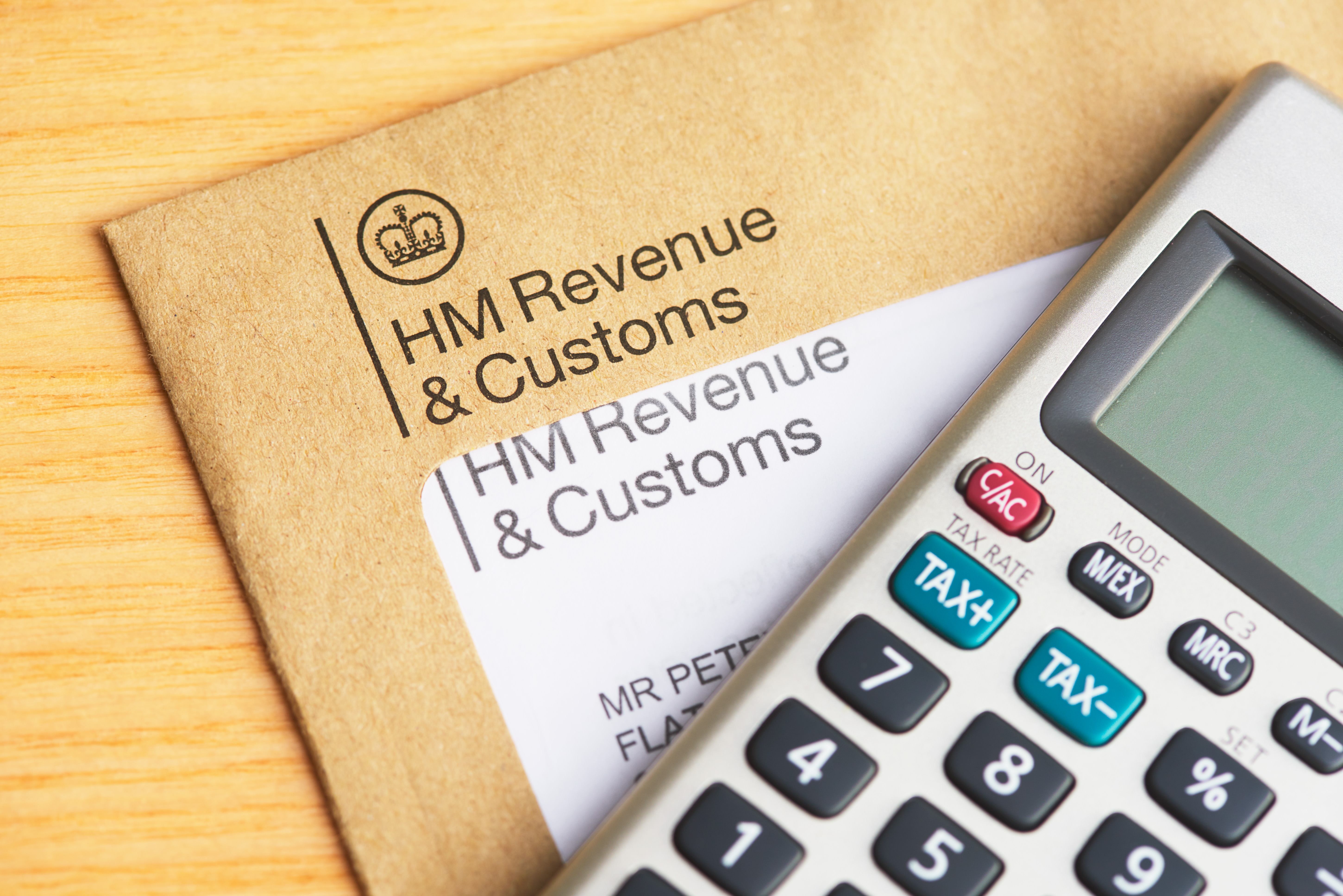Child Benefit: how it works, eligibility criteria and how to claim
Child Benefit is worth hundreds of pounds per year and claiming it can help build up your state pension entitlement. We look at who is eligible and how to get the payment


If you are responsible for bringing up a child who is under the age of 16, or under the age of 20 but still in approved education or training, you could be entitled to Child Benefit.
This is a valuable payment worth up to £1,355 per year for your oldest child and £897 for any subsequent children (2025/26 rates), with no limit on the number of children you can claim for.
Child Benefit is paid to more than 6.9 million families, supporting 11.9 million children, according to government data. This makes it one of the most widely-accessed forms of benefit in the UK.
MoneyWeek
Subscribe to MoneyWeek today and get your first six magazine issues absolutely FREE

Sign up to Money Morning
Don't miss the latest investment and personal finances news, market analysis, plus money-saving tips with our free twice-daily newsletter
Don't miss the latest investment and personal finances news, market analysis, plus money-saving tips with our free twice-daily newsletter
“Checking what Child Benefit you are entitled to can give household finances a healthy boost,” said Alice Haine, personal finance analyst at investment platform Bestinvest.
“Parents can either use the money to fund everyday costs or deposit it into a Junior ISA to help save for items like a child’s university costs, first car, or deposit on a future property.”
Claiming this benefit also gives you National Insurance contributions (NICs) which count towards your state pension, provided your child is still under the age of 12. This can be particularly valuable if you have taken time out of work to look after them.
Child Benefit is means tested, meaning high earners start to lose the payments once their income (or their partner’s income) exceeds £60,000. They lose it entirely once they cross the £80,000 threshold. This is known as the high income Child Benefit charge (HICBC).
However, it is still worth registering for the benefit to ensure you receive the NICs, even if you are over the threshold. There are several ways of returning or declining any money you aren’t entitled to.
Parents can either pay the HICBC money back at the end of each tax year by filing a self assessment tax return, or they can tick a box on the original application form to opt out of receiving the payment (while still receiving the valuable NIC).
A new service, due to launch this summer, will also allow parents to repay any excess child benefit through their PAYE tax code.
How much is Child Benefit?
Child Benefit is currently £26.05 per week for your eldest or only child, and £17.25 per week for additional children. This is equivalent to £1,354.60 per year for your oldest child and £897 for any subsequent children. These are the rates for the 2025/26 tax year.
Payments increase each year in line with inflation. The increase happens in April, but is based on the previous September’s inflation reading. The most recent increase for 2025/26 was 1.7%.
Only one person can claim Child Benefit for each child, but there are no limits on the number of children you can claim for. It should not be confused with the two-child benefit cap, which is something different. This refers to a government rule which restricts Universal Credit and child tax credits for families with more than two children.
Is Child Benefit means tested?
Child Benefit is means tested, meaning high earners start to lose it once their income (or their partner’s income) exceeds £60,000. This is known as the high income Child Benefit charge.
You lose 1% of Child Benefit for every £200 of income you earn over the £60,000 threshold. This means you don’t qualify for anything once your income hits £80,000.
HMRC does not automatically adjust the amount high earners receive. Rather, you receive the full amount and are then required to return the excess by filing a self-assessment tax return.
Using the government’s Child Benefit tax calculator can help you work out how much you need to repay.
Critics have previously lambasted the rules as unfair, as the charge is based on each individual parent’s income rather than household income.
This means a family where one parent earns £80,000 and the other earns nothing at all will not qualify for any Child Benefit, whereas a household where both parents earn £60,000 will qualify for the full amount, despite having a higher total household income (£120,000).
There are some strategies parents can use to avoid losing Child Benefit payments. For example, you could qualify for Child Benefit by boosting your pension contributions through a salary sacrifice scheme. This is because making the contributions could bring you back under the threshold.
How to apply for Child Benefit
You can claim Child Benefit 48 hours after you have registered the birth of your child, or once a child comes to live with you. It can be backdated for up to three months.
You can use the government’s online service to make a claim. You will need your child’s birth or adoption certificate, your bank details, your National Insurance number and your partner’s National Insurance number (if you have a partner).
How is Child Benefit paid?
Child Benefit is paid into your account every four weeks on a Monday or Tuesday. You can only get the money paid into one account.
Only one person is able to receive Child Benefit, so you need to decide whether it is better for you or the other parent to claim. If you cannot agree, HMRC will decide on your behalf.
Building up your state pension entitlement
You will automatically receive National Insurance credits if your child is under 12 and you claim Child Benefit. These contribute towards your state pension entitlement.
You need a minimum of 10 years of NICs to qualify for any state pension at all, assuming you fall under the new state pension. To receive the full new state pension amount (currently £11,973 per year), you need 35 years of contributions.
These credits help prevent gaps in your record if you have taken time out of work to look after young children. They can also prove valuable if you do not earn enough to pay National Insurance contributions – perhaps because you have gone part-time and are under the threshold.
If you do not need the credits, your family may be eligible for the support instead.
Your husband, wife or partner can apply to transfer the credits, or another family member who looks after your child can apply for them instead. These are called specified adult childcare credits.
For example, you may wish to transfer your NI entitlement to a grandparent who is involved in childcare responsibilities. They are only eligible to receive them if they are under state pension age.
“Applications for specified adult childcare credits are surging as more families catch on to the fact that looking after grandchildren doesn’t just help with childcare but can also boost your retirement income,” said Jon Greer, head of retirement policy at wealth management firm Quilter.
Quilter says each year of transferred credit is currently worth £330 in additional state pension income (based on 2025/26 rates), potentially adding £6,600 over a 20-year retirement.
Despite this, awareness remains low. “Many eligible grandparents could be missing out on thousands of pounds simply because they don’t realise they qualify or how to apply,” Greer added.
Can you claim Child Benefit if you move overseas?
It is likely that you will lose the right to claim Child Benefit if you move overseas, although some countries have a social security agreement with the UK, which could entitle you to the benefit.
You should contact the Child Benefit Office if you go abroad for more than eight weeks.
The government recently announced it was clamping down on claims from parents who have moved abroad in an effort to save £350 million – an attempt to prevent money being lost through fraud and error.
Thousands of people who left the UK but carried on claiming Child Benefit have reportedly been removed from the system already.
How to extend your Child Benefit claim for 16 to 19-year-olds
Child Benefit will stop when your child turns 16, unless they remain in education or training. You will be sent a letter during your child’s last year at school asking you to confirm their next steps.
Education must be full-time – more than 12 hours a week of supervised study or course-related work experience. This can include A-Levels, T-Levels, the International Baccalaureate, Scottish Highers, most vocational qualifications up to level three, pre-apprenticeships and other approved training.
Your Child Benefit payments will continue once you confirm to HMRC you are still eligible. Parents can do this quickly and easily online or via the HMRC app. You should act by 31 August, otherwise your payments will automatically stop.
Parents can also scan the QR code in their reminder letter which will take them straight to the digital service.
“Teenagers can be expensive and Child Benefit is an important source of income for your household,” said Myrtle Lloyd, chief customer officer at HMRC.
“As soon as you know what your teen is doing in September, don’t miss out. You can extend your claim in minutes through the HMRC app or online to ensure your payments continue.”
Get the latest financial news, insights and expert analysis from our award-winning MoneyWeek team, to help you understand what really matters when it comes to your finances.
Katie has a background in investment writing and is interested in everything to do with personal finance, politics, and investing. She previously worked at MoneyWeek and Invesco.
-
 Boost for over 100,000 families on Child Benefit as new HMRC payment system rolled out
Boost for over 100,000 families on Child Benefit as new HMRC payment system rolled outThousands of households will no longer have to pay the dreaded High Income Child Benefit Charge through self-assessment
-
 Are you being haunted by the ghost of Christmas past? How festive cutbacks could boost your long-term wealth
Are you being haunted by the ghost of Christmas past? How festive cutbacks could boost your long-term wealthThe average family spends around £1,000 over the Christmas season. Here’s how much you could have gained if you had invested some of the money instead.
-
 How to limit how much of your Christmas bonus goes to the taxman
How to limit how much of your Christmas bonus goes to the taxmanIt's Christmas bonus season but the boosted pay packet may mean much of your hard-earned reward ends up with HMRC instead of in your pocket
-
 Over 1 million pay 45% rate of income tax as fiscal drag bites
Over 1 million pay 45% rate of income tax as fiscal drag bitesHundreds of thousands more people are being pushed into the additional rate tax band by fiscal drag
-
 'I've used my annual ISA allowance. How can I shield my savings from tax?'
'I've used my annual ISA allowance. How can I shield my savings from tax?'As millions face paying tax on savings interest, we explore how to protect your money from the taxman. If you've used up your ISA allowance, we look at the other tax-efficient options.
-
 Simple assessment explained as millions brace for unexpected tax bills
Simple assessment explained as millions brace for unexpected tax billsIncreasing numbers of people could get letters from HMRC saying they owe more tax due to frozen thresholds, under a system known as simple assessment. Here is what it means for you.
-
 What are wealth taxes and would they work in Britain?
What are wealth taxes and would they work in Britain?The Treasury is short of cash and mulling over how it can get its hands on more money to plug the gap. Could wealth taxes do the trick?
-
 When is the self-assessment tax return deadline?
When is the self-assessment tax return deadline?If you are self-employed, rent out a property or earn income from savings or investments, you may need to complete a self-assessment tax return. We run through the deadlines you need to know about
-
 HMRC warning after scammers target 170k taxpayers – how to stay protected
HMRC warning after scammers target 170k taxpayers – how to stay protectedScammers are using increasingly sophisticated methods to trick people into sharing personal details or paying for fake self assessment tax refunds
-
 HMRC rewarded tax informants with £850,000 as record fraud tip-offs sent to taxman last year
HMRC rewarded tax informants with £850,000 as record fraud tip-offs sent to taxman last yearThe taxman was tipped off about 164,670 cases of alleged fraud last year, but total rewards given to snoops fell in the 2024/5 tax year.
